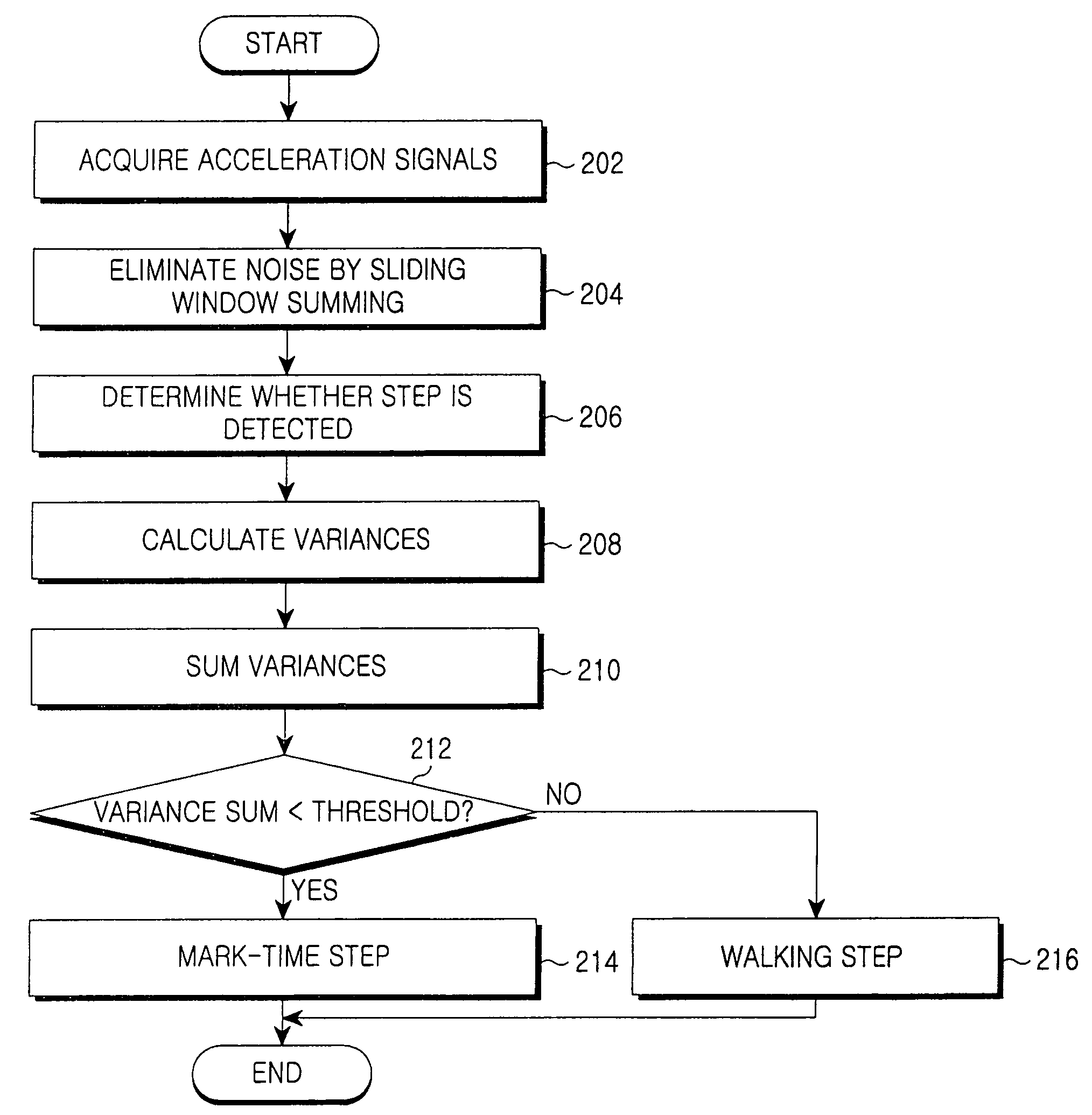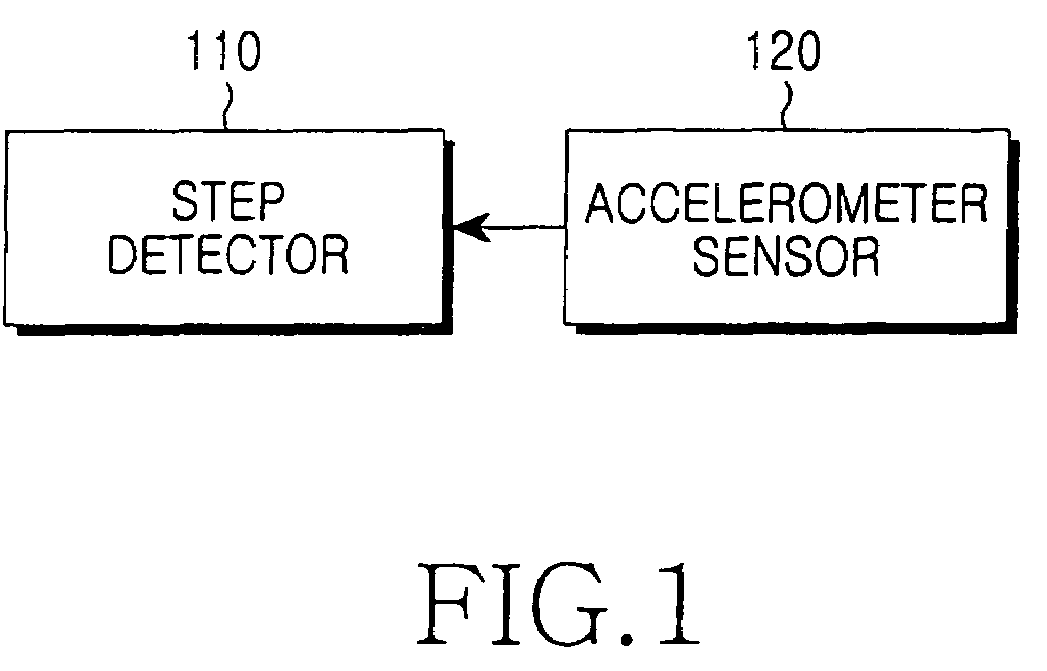Apparatus and method for detecting step in a personal navigator
a personal navigator and step detection technology, applied in the field of personal navigators, can solve the problems of incorrect inability to detect normal walking, inaccurate estimation of step length, etc., and achieve the effect of correct estimation of step length
- Summary
- Abstract
- Description
- Claims
- Application Information
AI Technical Summary
Benefits of technology
Problems solved by technology
Method used
Image
Examples
Embodiment Construction
[0025]Preferred embodiments of the present invention will be described herein below with reference to the accompanying drawings. In the following description, well-known functions or constructions are not described in detail since they would obscure the invention in unnecessary detail.
[0026]FIG. 1 is a block diagram of a step detection apparatus in a personal navigator according to the present invention. The step detection apparatus includes an accelerometer sensor 110 and a step detector 120.
[0027]The accelerometer sensor 110 may be a multi-axis accelerometer sensor, such as a two-axis accelerometer sensor or the like. The accelerometer sensor 110 senses a linear movement along each axis and outputs an acceleration signal waveform according to the sensed movement. For example, the accelerometer sensor 110 can be a three-axis Micro Electro Mechanical System (MEMS) type, i.e. an ultra-small accelerometer, for detecting a linear movement along each of a side direction (X), a forward d...
PUM
 Login to View More
Login to View More Abstract
Description
Claims
Application Information
 Login to View More
Login to View More - R&D
- Intellectual Property
- Life Sciences
- Materials
- Tech Scout
- Unparalleled Data Quality
- Higher Quality Content
- 60% Fewer Hallucinations
Browse by: Latest US Patents, China's latest patents, Technical Efficacy Thesaurus, Application Domain, Technology Topic, Popular Technical Reports.
© 2025 PatSnap. All rights reserved.Legal|Privacy policy|Modern Slavery Act Transparency Statement|Sitemap|About US| Contact US: help@patsnap.com



